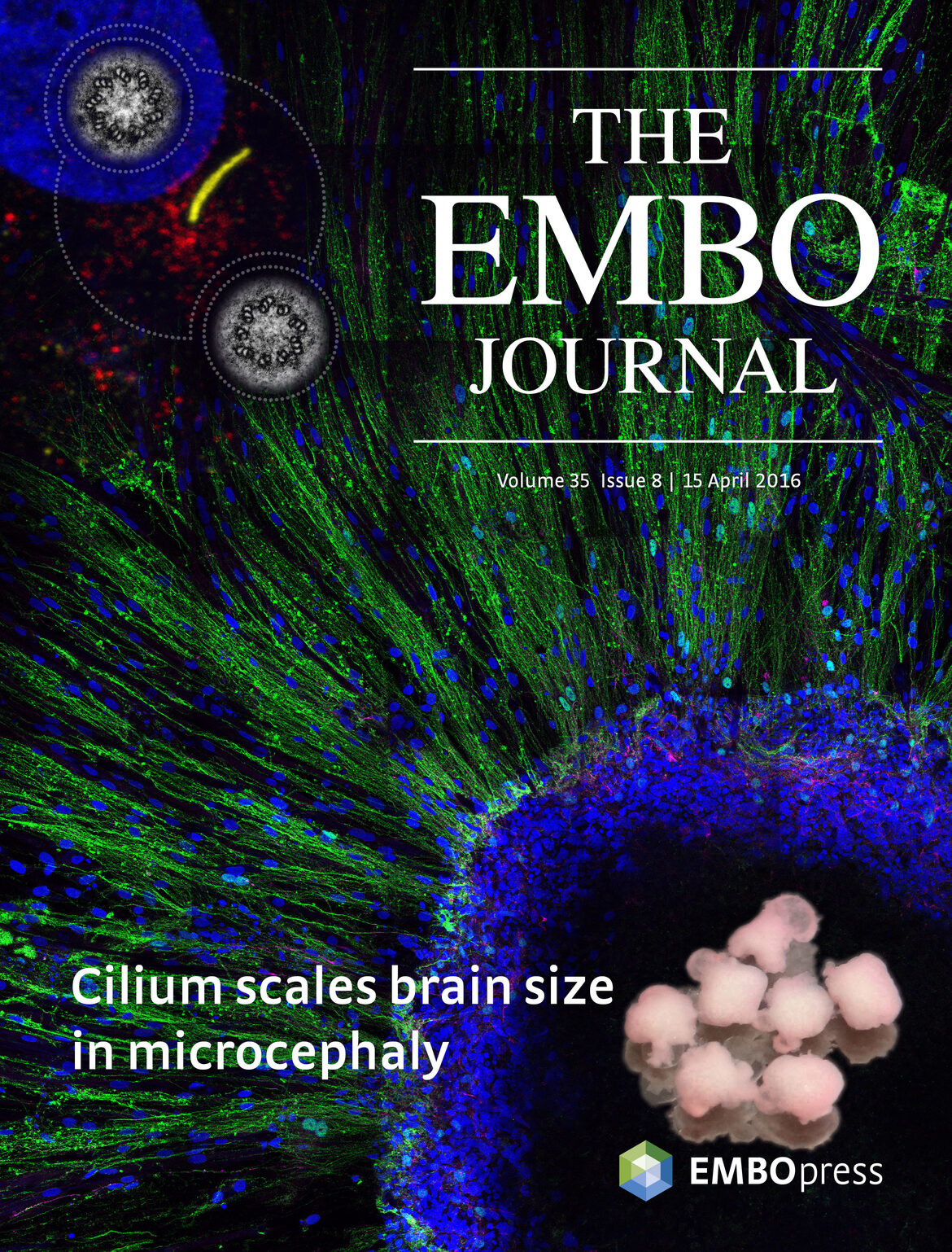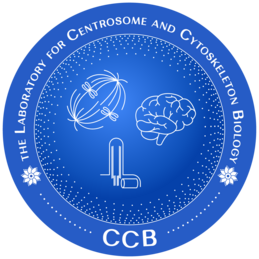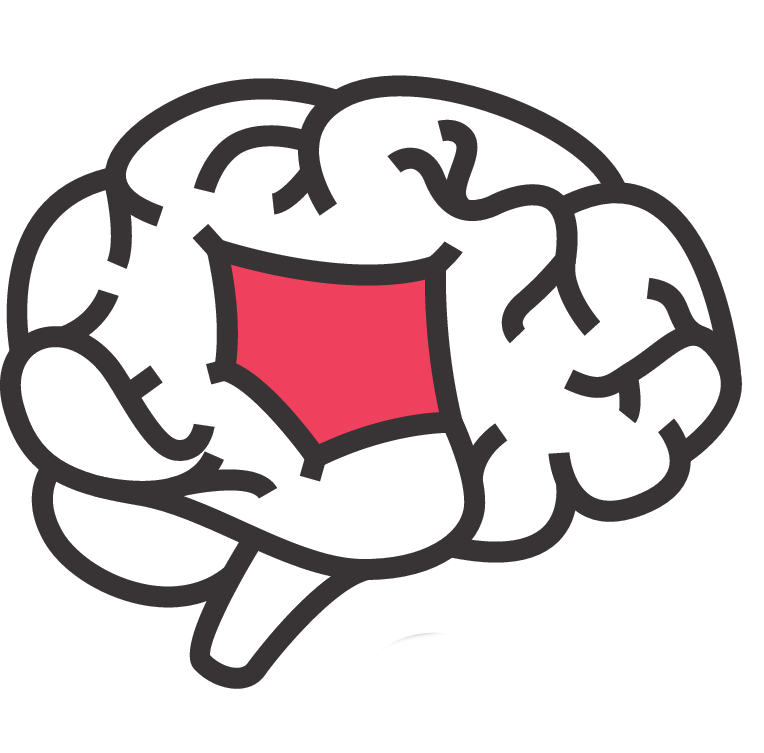iPSC-Derived 3D Human Brain Organoids to Model Brain Development and Disorders
Introduction
We are in the modern era of 3D human tissues as human organoids. Since 2012, there is a massive progress has been made in tissue engineering. In specific, culturing human stem cells into complex tissues that mimic miniature organs called "Organoids". These 3D culturing technologies have enormous potential not only to understand the biology but also to model human diseases in human tissues.
The groundbreaking discovery came from the lab of Yoshiki Sasai demonstrating pluripotent stem cells have the ability to organize into complex neural tissues. Then a quantum leap was made by Madeline Lancaster generating them as "Cerebral Organoids". These methodological advances have revolutionized the basic and biomedical research on human brains.
In our lab, we exploit the self-assembling properties of iPS cells and generate human brain organoids (mini-brains in the dish). We use them as a powerful model system to understand how the human brain develops, functions and degenerates. In particular, we use patient-derived human organoids to model microcephaly and to decode the complexity of the human brain (see relevant papers in the publication section).
Selected publications regarding Brain Organoids from our lab:
-
Gabriel, E., Albanna, W., Pasquini, G., Ramani, A., Josipovic, N., Mariappan, A., Schinzel, F., Karch, C.M., Bao, G., Gottardo, M., et al. * (2021). Human brain organoids assemble functionally integrated bilateral optic vesicles. Cell Stem Cell. 2021 Aug 12:S1934-5909(21)00295-2. doi: 10.1016/j.stem.2021.07.010.
-
Received international attention in more than 200 news outlets, Use the search term "Mini brains with eye-like structures".
- See highlight: The eyeballs connected to the brain ball by Rajesh C Rao, Jeffery H Stern, and Sally Temple. Cell Stem Cell. DOI: 10.1016/j.stem.2021.09.010
-
- * Trends and challenges in modeling glioma using 3D human brain organoids. Cell Death Differ. 2020 Dec 1:1-9. doi: 10.1038/s41418-020-00679-7.
- Anand Ramani, Lisa Muller, Philipp Niklas Ostermann [...] Heiner Schaal* and Gopalakrishnan J*. SARS-CoV-2 targets neurons of 3D human brain organoids. EMBO Journal. 2020 Oct 15;39(20):e106230. doi: 10.15252/embj.2020106230. (Cover article)
- *
- *.Human brain organoids to decode mechanisms of microcephaly. Front Cell Neurosci. 2020 May 8;14:115. doi: 10.3389/fncel.2020.00115. eCollection 2020.
- Gabriel E, Gopalakrishnan J* Generation of iPSC-derived human brain organoids to model early neurodevelopmental disorders. J Vis Exp. 14; 2017. (122).
- Gabriel E, Ramani A, Karow U, Gottardo M, Natarajan K, Gooi LM, Goranci-Buzhala G, Krut O, Peters F, Nikolic M, Kuivanen S, Korhonen E, Smura T, Vapalahti O, Papantonis A, Schmidt-Chanasit J, Riparbelli M, Callaini G, Krönke M, Utermöhlen O, Gopalakrishnan J*. Recent Zika virus isolates induce premature differentiation of neural progenitors in human brain organoids. Cell Stem Cell 20, 2017. 1-10.
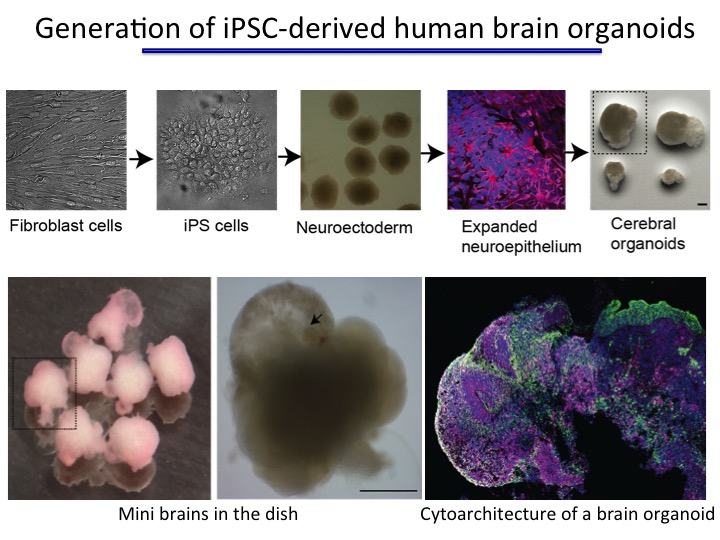
Concised summary regarding the generation of brain organoids
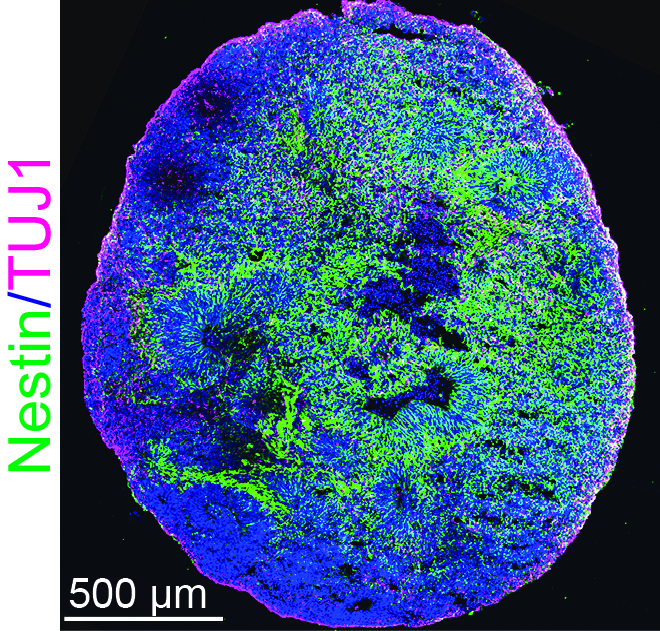
Cross-section of a brain organoid
Press Coverage
-
Gabriel, E., Albanna, W., Pasquini, G., Ramani, A., Josipovic, N., Mariappan, A., Schinzel, F., Karch, C.M., Bao, G., Gottardo, M., et al. * (2021). Human brain organoids assemble functionally integrated bilateral optic vesicles. Cell Stem Cell (in press). Published: August 17, 2021. DOI: https://doi.org/10.1016/j.stem.2021.07.01.
-
Received international attention in more than 200 news outlets, Use the search term “Mini brains with eye-like structures"
-
Few examples:
- https://www.indiatimes.com/technology/science-and-future/scientists-grew-mini-brains-in-a-lab-then-those-brains-developed-eyes-547479.html
- https://www.newscientist.com/article/2287207-tiny-human-brain-grown-in-lab-has-eye-like-structures-that-see-light/
- https://www.livescience.com/brain-organoid-optic-eyes.html
- https://www.sciencealert.com/scientists-used-stem-cells-to-make-mini-brains-they-grew-rudimentary-eyes
- https://www.news18.com/news/buzz/lab-made-mini-brains-develop-eye-like-structures-sensitive-to-light-4110560.html
-
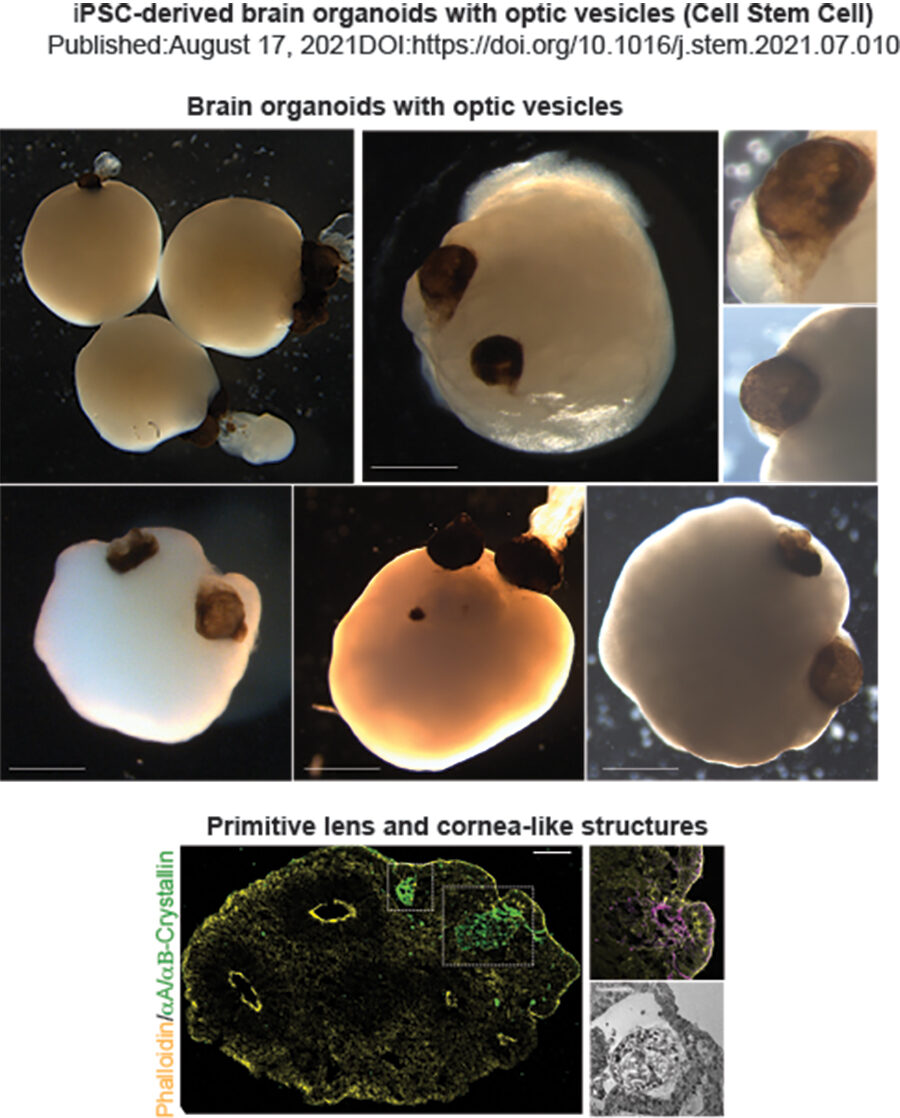
- Ramani et al. The EMBO Journal 2020. SARS-CoV-2 targets neurons in human bran organoids.
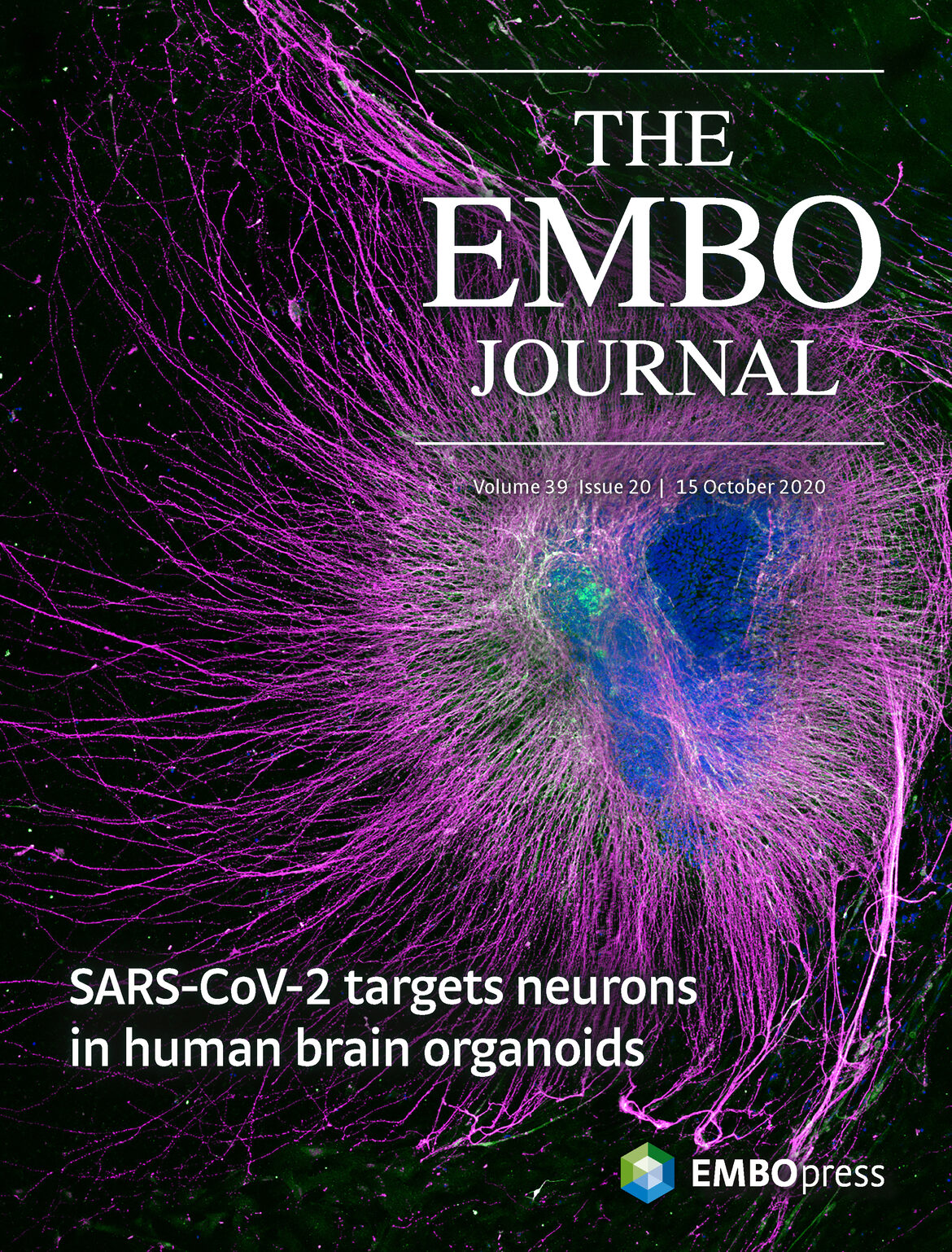
See the press release: https://www.embo.org/news/press-releases/2020/mini-brain-organoids-show-potential-for-sars-cov2-to-cause-neurodegenerative-disease-like-effects.html
- Goranci et al. Cell Reports 2020. Glioma invasion in the human brain organoids.
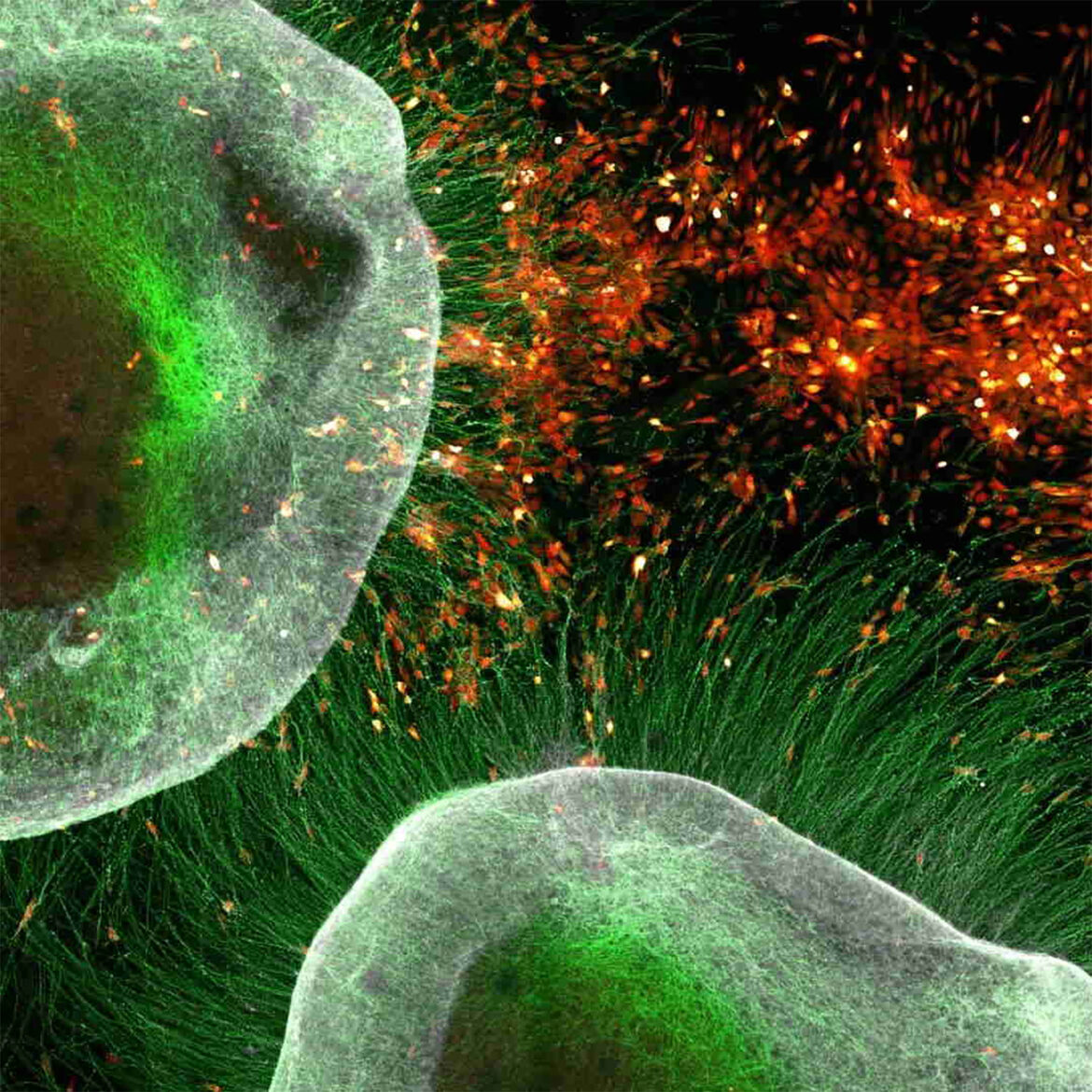
- Gabriel et al. The EMBO Journal 2016. Cilium scales brain size in microcephaly.
